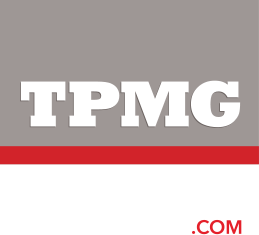March, 2024- Choosing the right cutting or grinding wheel for a specific application can be a challenge, especially when faced with endless options, demanding projects and cost-reduction measures. Tool power, end-use application and material all factor into a wheel’s effectiveness, in addition to the abrasive’s construction. For example, stainless steel that’s destined for a pharmaceutical or medical environment requires a contaminant-free wheel, and aluminum has a low fusion point that can very easily and quickly load an improper wheel.
The first thing an operator using a non-optimized product may notice is undesired results in performance, material workability or outright product failure, which can lead to major safety issues and accidents. The inevitable consequences of using improper tools is a loss in productivity.
Using a lowest-cost purchasing approach can be tempting, but it is short-sighted because productivity will inevitably diminish over the long term. This is because while cheaper products may offer upfront savings, their inferior quality will drive up replacement costs over time. When looking at high-performance abrasives, raw materials suitable to the application are considered first.
RAW MATERIAL COMPOSITION
Various grains are used to make abrasives, each possessing unique properties suited to specific applications and performance. The choice of abrasive grain depends on factors such as the material being worked on, the desired finish and the intended use of the wheel. For most general applications, four abrasive grains are commonly used that can affect wheel price and performance: aluminum oxide, zirconia alumina, ceramic and silicon carbide (often used in more specialized applications). When looking for high-performance, consider a ceramic abrasive. These grains are engineered and provide heat and wear resistance; they are sharp and provide the perfect balance between aggressivity and durability.
Ceramic abrasives require lower pressure on the power tool, which leads to less operator fatigue and smoother grinding.
BONDING AGENTS
The material composition of an abrasive can be decisive when considering a wheel, but going beyond the grain can not only enhance a wheel’s life, but may increase safety and ensure that the abrasive grain’s performance is maximized.
The bonding agents used in the wheel’s construction significantly affect its durability, heat resistance and stability. When resin is overheated, it can burn and glaze and fail to release the grain. High-performance bonding agents are resistant to heat and mechanical energy. Bonding agents such as Walter’s Smart Resin technology contribute to longer wheel life by exposing fresh ceramic grains at the optimal time to achieve the most productive balance between sharpness and wheel lifespan for a wide variety of cutting and grinding applications.
The structural integrity and design of an abrasive wheel will influence its performance. All grinding wheels are strengthened through fiberglass reinforcement—but quality matters here, too. High-performance grinding wheels will use thicker fiberglass and sometimes extra layers. Reinforcements ensure integrity, rigidity and strength of the disc.

PACKAGING AND STORAGE
Wheels lose their ability to remove material effectively if they are improperly stored. A common misperception is that wheels can be removed from the packaging for storage. Contact with the air, especially if the environment is humid, reduces performance. Unused wheels that are exposed can have performance decline by as much as 50 percent within six months. For large cut-off wheels, it’s important to store them flat and horizontal, otherwise they can bend, which is dangerous when turning at high RPMs. Walter packages its bonded abrasives in airtight containers to preserve wheel integrity. In addition, we recommend implementing a first-in, first-out management strategy to avoid the performance drop that comes with time.
Each of these aspects enables a wheel to deliver a high removal rate with lower operator pressure. That will reduce operator fatigue and facilitate longer work cycles with fewer stoppages. Therefore, grinding time will be reduced while productivity rises. Another important advantage that high-performance abrasives bring to the shop floor is longer wheel life. Durable wheels reduce time-consuming changeovers. Reduced product consumption, meanwhile, equates to lower product inventory, which helps keep total costs down.
Walter Surface Technologies, walter.com












